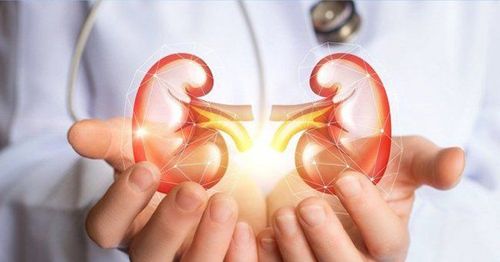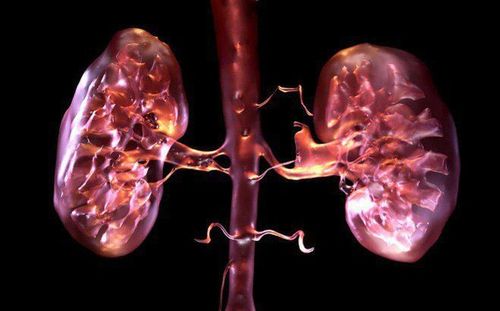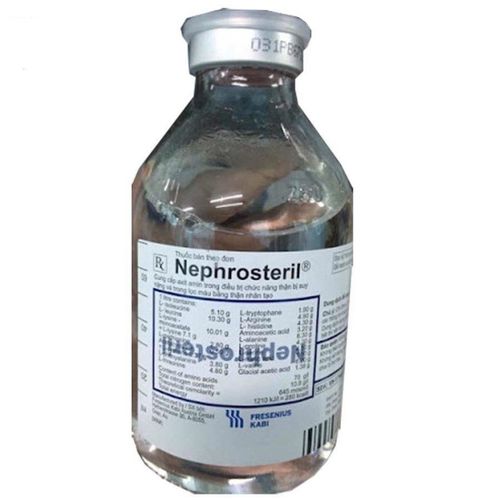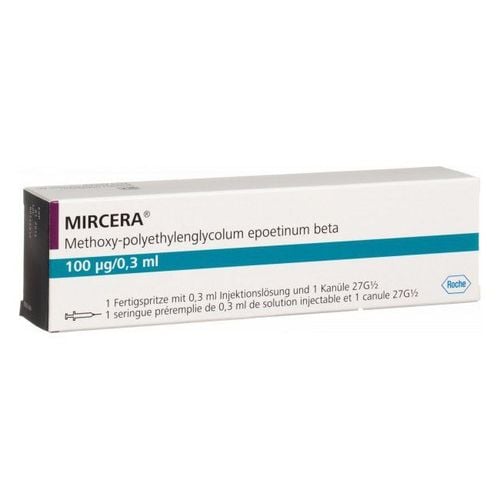This is an automatically translated article.
Hemodialysis is an important treatment step, helping to prolong the life of patients with end-stage kidney disease. Before undergoing dialysis, the patient will undergo an arteriovenous bypass (AVF) surgery. However, the AVF bridge itself is an abnormal circulation, so some abnormalities can still occur during treatment, in which AVF stenosis is the most common pathology.
1. What is AVF Bridge?
An arteriovenous (AV) fistula is an abnormal connection between an artery and a vein. Normally, blood flows from arteries to capillaries to veins. The nutrients and oxygen in the blood travel from the capillaries to the tissues in the body. With an arteriovenous fistula, blood flows directly from an artery into a vein, bypassing some capillaries. Arterial fistulas are often surgically created for use in dialysis in people with severe kidney disease.
For patients with chronic renal failure in the end stage, before performing hemodialysis, the patient is required to perform arteriovenous fistulation (AVF) surgery.
The basic structure of the AVF bridge includes:
Inflow artery: the part of the artery before the anastomosis. Outflow artery: the part of the artery behind the anastomosis Anastomosis: the site of direct communication between the artery and the vein Effective segment: the segment of the vein used for insertion dialysis needle Peripheral drainage vein: the portion of the vein that drains immediately after the effective segment, which may have one or more drainage channels. Central venous return: the portion of the vein that drains near the proximal extremity, usually referring to the subclavian, brachial, and superior vena cava.
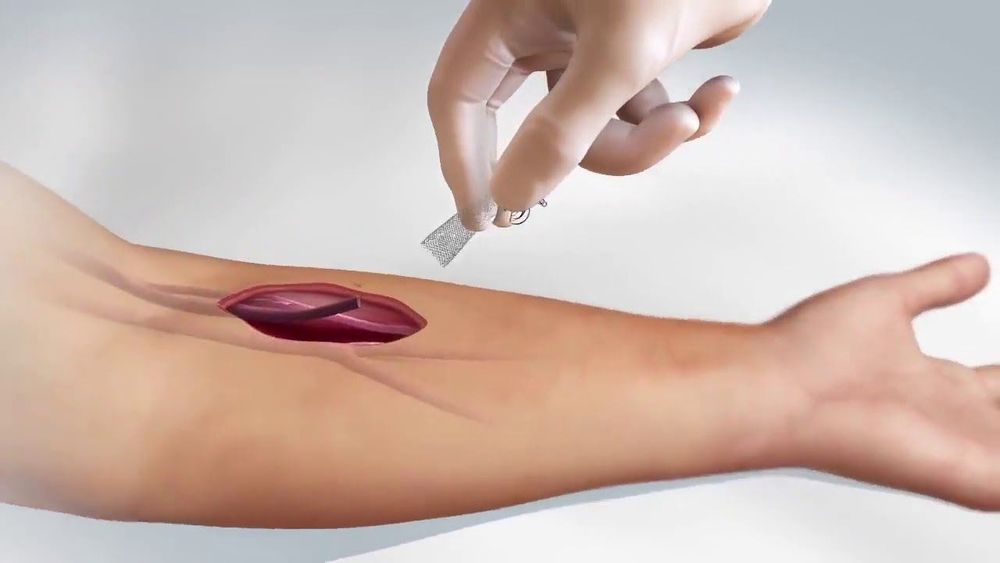
Phẫu thuật tạo cầu nối động - tĩnh mạch (AVF) được thực hiện trước khi bệnh nhân tiến hành lọc thận nhân tạo
2. AVF bridging stenosis in end-stage dialysis patients
As mentioned above, the AVF bridge is formed surgically to create a direct communication from the artery to the vein. AVF is not a vascular structure with “normal” circulation, but a “pathological” form of circulation. Possible abnormalities of the bridge such as stenosis, anatomic abnormalities of the effective segment: including diameter, depth, torsion, length and aneurysmal dilation (aneurysmal). dilation), abnormality at the puncture site, giant shunt (when the flow through the bridge is too great, usually due to the diameter of the incoming artery and the diameter of the anastomosis being too large). Among them, AVF occlusion is the most common pathology.
There are many different types of bridges, and the same type of bridge has many different narrow forms in different locations. Therefore, up to now, there has not been a well-defined definition of AVF bridging stenosis that can cover all types of bridges. The definition agreed by many authors is that bridge stenosis is when the circulating flow through the bridge is not enough for the dialysis machine system to work fully and normally. Specifically, when the absolute minimum diameter within the vessel is <= 2.7mm in any segment except the effective segment. Usually, we determine whether a segment is narrow or not by comparing the diameter at the site to be investigated with the lumen diameter of the adjacent segments. However, the AVF bridge itself is not normal, there will be vasodilation and aneurysms during use, so such a common calculation will sometimes be difficult to determine what is a bridge stenosis. connect.
Causes of AVF bridging stenosis can be due to: endothelial hyperplasia, vascular fibrosis, atherosclerosis, wall thrombosis. These causes can form in both the afferent artery and the draining vein.
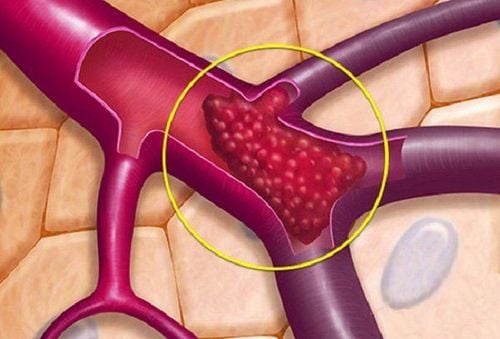
Nguyên nhân gây hẹp cầu nối AVF có thể do huyết khối bám thành
3. Treatment of AVF stenosis in dialysis patients
When a bridge is narrowed and blocked, the dialysis cycle cannot be guaranteed, the doctor may appoint surgery to create another bridge at a different location. However, the more AVF bridges are created, the more pathological circulations will be created, the more vulnerable the patient's body is, the more complications arise, especially for soft tissues. Therefore, using measures to prolong the life of the bridge is one of the widely accepted views today.
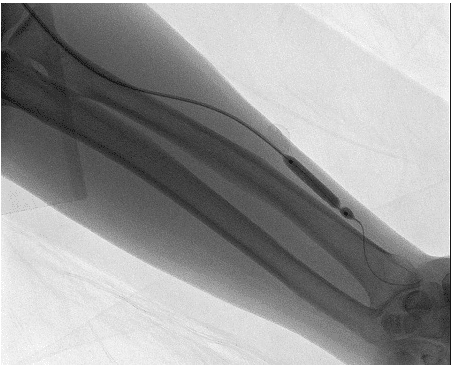
Phương pháp được áp dụng trong điều trị hẹp tắc cầu nối AVF là nong tạo hình lòng mạch.
One of the treatments for AVF recanalization is angioplasty. The basic intervention steps include:
Pre-interventional assessment: decide on the location of vascular access, venous access (common), arterial line (rarely applicable), arm or forearm . Usually assessed by doppler ultrasound. In cases where the ultrasound cannot determine the location and morphology of the lesion, digital subtraction venography (DSA venography) can be applied. or the basilar vein corresponding to the dominant draining vein. The site is usually open in the upper third of the forearm. Angiography to assess injury and hemodynamics Approach to injury: Pass through site of stenosis with coaxial catheter and guidewire. Continue through the anastomosis, check the afferent and efferent arteries with contrast Angioplasty with balloon catheter Angioplasty to check post-interventional status End of procedure: Close the lumen to reduce risk In case of hematoma, bleeding, closure of the lumen with sutures of the vessel wall and subcutaneous tissue is recommended rather than routine compression. Bridges can be used 12 hours after the intervention. AVF occlusion is a common pathology in end-stage dialysis patients. Accordingly, if the bridge occlusion is not treated, it can affect the hemodialysis process. However, the more AVF bridges are created, the more pathological cycles will be created, the more vulnerable the patient's body is, so doctors will use measures to prolong the life of the patients. this bridge.
Vinmec International General Hospital is a general hospital with the function of examining and treating kidney and urinary diseases and many other diseases. At Vinmec, we have also performed examination, diagnosis and treatment with modern medical methods for urological kidney diseases, including dialysis and hemodialysis procedures, which not only bring high efficiency but also high efficiency. also minimize the complications of disease recurrence. The great success is because Vinmec is always fully equipped with modern facilities, examination and treatment procedures are carried out by a team of well-trained and experienced doctors in and foreign.
To register for medical examination and treatment at Vinmec International General Hospital, you can contact Vinmec Health System nationwide, or register online HERE.




